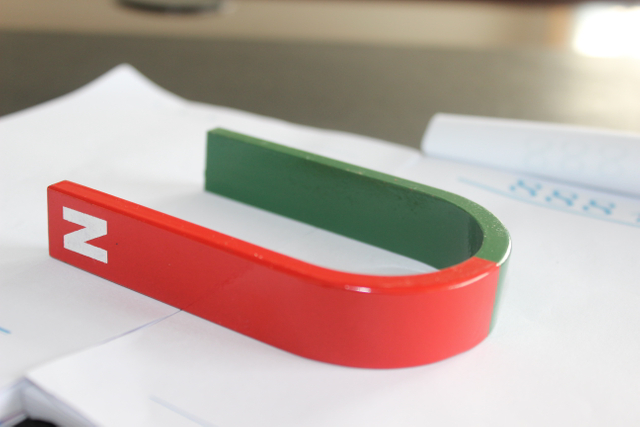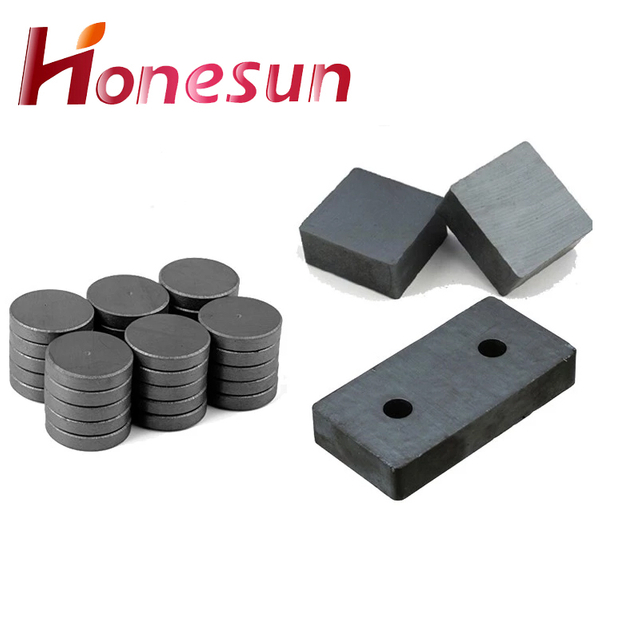Views: 18 Author: Site Editor Publish Time: 2024-05-24 Origin: Site
Honesun is a well-known magnet manufacturer and supplier, specializing in the design, production, and distribution of a wide range of magnets including AlNiCo and Ferrite magnets. Magnets are essential in many industries, from electronics and automotive to healthcare and aerospace. Each type of magnet has unique properties and benefits, making them suitable for specific applications. In this article, we will explore the differences between AlNiCo and Ferrite magnets, both of which are commonly used in various industries.
AlNiCo magnets are composed of aluminum, nickel, and cobalt, which give them their name. They were first developed in the 1930s and are still widely used today due to their high magnetic flux density and excellent temperature stability. AlNiCo magnets are relatively expensive but offer strong magnetization and can be used in temperatures up to 550°C. They are commonly used in applications such as loudspeakers, motors, and sensors.

Ferrite magnets, also known as ceramic magnets, are made of a combination of iron oxide and either barium or strontium carbonate. They were first developed in the 1950s and are the most commonly used type of magnet due to their low cost, high resistance to demagnetization, and high coercivity. Ferrite magnets are easy to manufacture and can be produced in large quantities, making them a popular choice for a wide range of applications such as motors, speakers, and refrigerator magnets.

The main difference between AlNiCo and Ferrite magnets lies in their composition and resulting properties. AlNiCo magnets are made up of a combination of different metals, while Ferrite magnets are primarily made of ceramic materials. This difference in composition affects their magnetic properties. AlNiCo magnets have a higher magnetic energy product, also known as the maximum energy product (BHmax), which measures the strength of a magnet. This makes them stronger than Ferrite magnets, allowing them to generate a higher magnetic flux.

Ferrite magnets have a higher retentivity, also known as residual flux density, which measures the strength of the magnetic field that remains in a magnet after it has been fully magnetized. This means that Ferrite magnets are more resistant to demagnetization, making them a more reliable and cost-effective option for long-term use.
The manufacturing process also differs between AlNiCo and Ferrite magnets. AlNiCo magnets are produced through casting or sintering, while Ferrite magnets are made using a powder sintering process. Casting involves melting the metals and pouring the molten material into a mold, while sintering involves compressing powdered materials in a mold and then heating them until they are fused together. This difference in production results in different shapes and sizes of magnets. AlNiCo magnets can be easily molded into various shapes, while Ferrite magnets are limited to only a few shapes such as discs, blocks, and rings.
Both AlNiCo and Ferrite magnets have unique properties that make them suitable for specific applications. AlNiCo magnets are commonly used in high-temperature applications, such as generators and electric motors that operate at high speeds. They are also used in sensors, meters, and relays due to their stable magnetic field and low coercive force. Ferrite magnets, on the other hand, are commonly used in permanent magnet motors, loudspeakers, and magnetic assemblies. They are also a popular choice for magnetic toys and educational tools due to their low cost and easy availability.

Apart from AlNiCo and Ferrite magnets, Honesun also offers a wide range of other magnets that cater to various industrial and commercial applications. These include Flexible Magnets, Magnetic Assemblies, Neodymium Magnets, and SmCo Magnets.
Flexible Magnets, also known as rubber magnets, are made from a mixture of ferrite powder and synthetic rubber, which gives them a flexible and rubber-like texture. These magnets are lightweight, easy to manipulate, and can be cut into different shapes and sizes, making them an ideal choice for advertising displays, fridge magnets, and educational tools.
Magnetic Assemblies are a combination of different types of magnets and other materials that are used to create a specific magnetic field and function. They are commonly used in motors, generators, and magnetic separators. Honesun offers a wide range of custom-made magnetic assemblies for various industrial applications.
Neodymium Magnets, also known as rare-earth magnets, are the strongest and most powerful type of permanent magnets available. They have an incredibly high BHmax, making them ideal for applications that require high magnetic strength in a small size. Neodymium magnets are commonly used in speakers, headphones, wind turbines, and magnetic separators.

SmCo Magnets, also known as samarium-cobalt magnets, are made of a combination of samarium and cobalt, making them highly resistant to corrosion. They have a high magnetic strength and are able to withstand high temperatures, making them suitable for applications such as aerospace and military equipment.
lNiCo and Ferrite magnets are two of the most commonly used magnets in the industry, each with its unique properties and benefits. While AlNiCo magnets are stronger and more resistant to high temperatures, Ferrite magnets are more cost-effective and resistant to demagnetization. At Honesun, we take pride in offering a diverse range of magnets to cater to various needs and applications. With our expertise in magnet manufacturing, design, and customization, we are committed to providing top-quality magnets for our customers.
Honesun Industrial Co., Ltd. focuses on designing, researching, developing, manufacturing and selling Magnets and Magnetic Assemblies. With more than 15 years' rich experience and considerate services.we have been recognized as a reliable.



